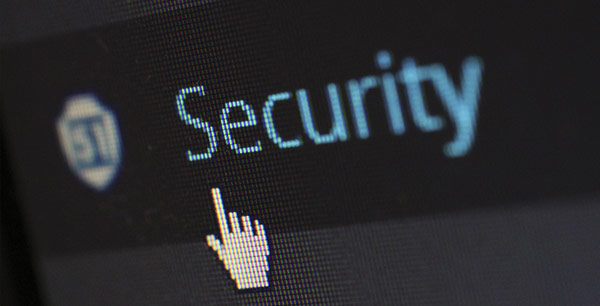6 Best Practices for Preventing Check Fraud at Your Business
Check fraud has been on the rise in recent years, leading many businesses to take steps to detect and prevent cases of fraud.

In February of 2023, the Financial Crimes Enforcement Network (FinCEN), an investigative arm of the U.S. Treasury Department, issued a report indicating that cases of check fraud have more than doubled over the past three years, increasing from around 285,000 cases in 2020 to 680,000 cases in 2022, with no signs of slowing down.
Notably, this report explicitly focuses on the impact that mailed checks have on these numbers, stating that, “despite the declining use of checks in the United States, criminals have been increasingly targeting the U.S. mail since the COVID-19 pandemic to commit check fraud.”
In this article, we’ll explore the basics that business owners need to know to protect their organizations from the growing risk of check fraud.
If you think you’ve been a victim of check fraud, immediately contact your bank to report the issue.
Why is check fraud so prevalent?
While there are several factors that all contribute to the rise in check fraud over the past several years, the primary catalyst seems to be the release of COVID-19 government relief checks that were mailed through the U.S. postal system during the pandemic.
Fraudsters specifically targeted these paper checks during this period, overwhelming the U.S. postal system’s ability to follow up on such cases of fraud.
After the final relief checks went out, scammers turned to targeting other kinds of checks, leading to the broader wave of fraud that has occurred over the past several years.
Importantly, focus has shifted toward business checks, which present a golden opportunity for fraud due to their high value and generally lower level of monitoring when compared to personal checks.
For this reason, the U.S. postal service has increasingly advised members of the public to be especially careful in how they choose to send and receive checks through the mail, and to be on the lookout for a few common sources of fraud:
- Check washing — This form of fraud occurs when someone gains access to an otherwise valid check (such as by stealing it out of a mailbox or the recipient’s office) and uses chemicals or other methods to erase the ink for the check’s amount and recipient. They can then write in a new amount for the check and address it to themselves. Check washing is currently one of the most common check scams affecting businesses.
- Direct cases of fraud — As businesses progressively move their operations online (and are more comfortable doing business with other organizations that have an online-only presence) it is increasingly common for suppliers or vendors to directly misrepresent their services and cash the check without delivering the requested good or service.
- Stolen or misplaced checkbooks — Since businesses are leveraging electronic payment solutions more than ever before, checkbooks are sitting unused for extended periods of time. This has led many businesses to find their checkbooks misplaced or stolen, giving scammers access to an entire booklet of seemingly valid checks to address to themselves.
6 Tips for preventing business check fraud
The rise in check fraud as a result of mail theft and other factors has led business owners to be steadily more mindful of how they use checks in their daily operations.
In general, the best and easiest solution for most businesses is simply to move their payment methods over to electronic systems such as ACH and real-time payments, which offer stronger protections and are not subject to the same attack vectors as physical checks.
However, for businesses that still need to use checks, there are still options for lowering the risk of being the victim of check fraud.
1. When writing a check, always use non-erasable gel ink (not a ballpoint pen)
As noted above, one of the most frequent scams facing businesses today is known as check washing, where a criminal will steal or otherwise acquire a valid check and erase the writing for the value of the check and to whom it’s written.
They will then write in their own name and a new amount and cash the check themselves.
For this reason, one of the easiest changes you can make to protect your business from check fraud by using a non-erasable gel ink pen that is resistant to everyday solvents.
Most ballpoint pens use additives that can be dissolved with chemicals such as rubbing alcohol or acetone (like nail polish remover). As such, you should be sure to sign all checks with a designated ink gel pen that is both indelible (long-lasting) and water-resistant.
2. Always fill out the check properly and leave no room for edits
A check scam that’s been around for decades involves a scammer acquiring an otherwise valid check and then adding additional information in order to siphon money from your account.
Imagine you engage with a new cleaning service to wash your business’s trucks and decide to pay them with a check for $900.
If the cleaning service is the front for a check scam, they could take your check and edit it to show a new amount owed of $1,900 by altering the check’s numeric amount and your written note of how much the check is for.
For this reason, it’s a best practice to fill out the check as fully as possible to leave less ambiguity about how much the check is for.
You should always write out the entire name of the recipient (to prevent alterations to who can cash the check) and ensure you fill in all available space on every box and line, starting at the very beginning of the box to prevent any additions.
If you fill out the check and find that there is still room on the line, draw a line to the end of the space to prevent criminals from altering the text in any way.
3. Leverage your business bank’s positive pay service
Positive pay is an automated fraud detection tool that matches the account number, check number and dollar amount of each check presented for payment against a check file previously authorized and issued by your company.
Basically, your company will provide a list of all checks currently outstanding to your bank, which will then use an automated system to match the date, check number, dollar amount and account number of each check against what they’re seeing in the real world.
Positive pay has numerous benefits for businesses, offering better fraud detection and account reconciliation protections, reduced disbursement risks (meaning better cash flow through less and more timely returns), lower administrative costs and better control over how checks are processed.
Businesses that frequently send checks should ask their business banker how they can learn more about Positive pay.
4. Restrict which accounts are allowed to post checks
Depending on how your business manages its finances, you may find that you only write checks from one or two of your accounts.
If this is the case, you may consider restricting your other bank accounts from posting checks entirely.
The key here is ensuring a minimum access policy for your accounts, meaning that any accounts you use exclusively for online reasons should be blocked from being able to send money via check.
In most cases, this will mean coordinating with your bank or leveraging an online portal to remove the ability to post checks from all accounts except for ones you intend to use specifically for that purpose.
5. Require signatures from two executives for large check transactions and segregate your accounting duties among different team members
In most accounting departments, a best practice is to segregate the duties and responsibilities for accounts payable to more than one person, who will each be responsible for different aspects of your business’s finances.
For instance, the person who issues the checks must not be the same person who endorses the check (by signing it). Similarly, many businesses require dual signatures from accounting controllers (such as C-suite executives or directors) who will both verify that the check is legitimate.
As another example, no one with authorization to endorse checks ought to have direct access to the checks themselves or the ability to alter the accounting system in any way, as this would give them the ability to alter the company’s books without any oversight or security checks.
In practice, your goal should always be to ensure there is no single point of failure in your accounting process where anyone has sole power over your company’s books.
By requiring multiple checks on accounts payable before they are sent and by delegating financial powers across several different people, you can reduce the risk that a single person has enough power to unilaterally write themselves a check and report it in your books as a valid expense.
6. Take care in how and where you hand off the check
Finally, it’s critical to remember that there is a clear correlation between the recent rise in both check fraud and mail theft.
Specifically, the U.S. Postal Inspection Service reported roughly 300,000 complaints of mail theft in 2021, more than doubling the total amount of theft in 2020 and coinciding with the 23% increase in check fraud seen during the same period.
As noted in the 2023 FinCEN report, “These criminals … target USPS blue collection boxes, unsecured resident mailboxes, and privately owned cluster box units … through forced entry or the use of makeshift fishing devices … [and] counterfeit USPS master keys.”
The key here for businesses is the need to take care of how your written checks enter the mail system and arrive at their final destination.
Due to the rise in compromised USPS blue collection boxes, you may want to consider mailing checks directly from the post office to reduce the risk that the check will be stolen.
Similarly, when given the choice between a post office (P.O.) box or mailing the check directly to the business’s location, it may be wise to choose the safer P.O. box to reduce the risk the check will be intercepted.
Work with your business banker to reduce your exposure to check fraud
Banks have numerous processes and services in place to help protect your business from instances of fraud.
From advanced detection and prevention services such as positive pay to providing you with fine control over which accounts are allowed to post checks, a combination of common sense and a little technical know-how is all you’ll need to prevent the large amount of potential fraudulent check transactions.
If, however, something does slip through the cracks and you find out that you’re a victim of check fraud, not all hope is lost.
Start by contacting your bank’s Customer Care Department to report the fraud. After investigating the matter, they will help you navigate the fraud process and potentially help you recover the money.
By working in partnership with your bank and taking care when sending checks through the mail, you can empower your business with the tools you need to prevent check fraud and protect your business’s finances in the long term.





